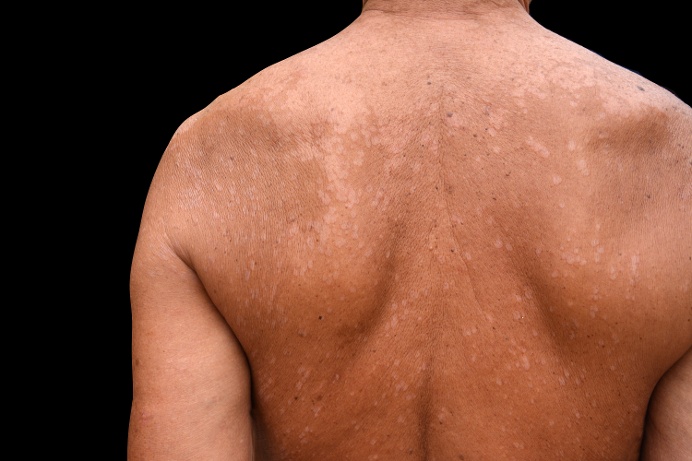Tinea versicolor is commonly found in tropical, or subtropical areas of the world in warmer, wetter climates. However, people living in other climates can still develop this skin condition, an overgrowth of yeast on the skin. We’re answering a few common questions we receive: what causes tinea versicolor and how do you treat it?
What is tinea versicolor?
First thing to note: it isn’t harmful, but many patients dislike the way it discolors their skin. Tinea versicolor is an overgrowth of yeast on the surface of your skin. It appears as spots on the skin that can be lighter, or darker than surrounding skin. The color varies, and could be white, pink, red, tan, or brown. They can look like a rash and develop and dry and scaly feeling.
The yeast grows slowly, and grow to form patches on the skin. Sometimes, spots are so light that people don’t really notice them. An interesting fact: these spots can become more noticeable when you have a tan, because yeast on the skin prevents it from tanning.

What causes tinea versicolor?
The yeast that causes tinea versicolor lives on everyone’s skin. According to the American Academy of Dermatology, it is not entirely clear why it grow’s on some people’s skin and not others, but some commonalities are known: people of all skin colors can get it, and people who live in non-tropical areas often see relief during dry, colder months.
These are thought to be the most common causes for yeast to overgrow:
- Hot, humid weather
- Lots of sweating
- Oily skin, making it more susceptible in young adults and teenagers
- A weakened immune system in combination with the above commonalities
How do you treat tinea versicolor?
As with any medical condition, treatment is entirely customized to a patient. But generally speaking, common treatments include topical or oral anti-yeast medications. With treatment, the yeast can return to its normal level on your skin, but discoloration can stick around, eventually returning to your normal skin color.
Schedule Your Appointment Today!

Leave a Reply